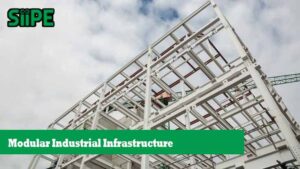In today’s rapidly evolving industrial landscape, sustainability is no longer just a trend—it’s a necessity. With global industries under increasing pressure to reduce carbon emissions and improve energy efficiency, renewable solutions like Solaris Energy Infrastructure are emerging as game-changers. This approach integrates solar technology and smart energy management into industrial environments, paving the way for a cleaner, more efficient, and future-ready ecosystem.
For industrial parks, Solaris Energy Infrastructure represents more than just an energy source—it’s a long-term investment in economic efficiency, environmental responsibility, and operational resilience.
Understanding Solaris Energy Infrastructure
Solaris Energy Infrastructure refers to the integration of solar power systems, energy storage solutions, and grid connectivity designed specifically for large-scale industrial use. Unlike standard solar installations, Solaris systems are engineered for high-demand environments, often combining photovoltaic panels, battery storage, and intelligent distribution systems to ensure uninterrupted power.
Key components include:
-
High-capacity solar arrays to maximize power generation.
-
Energy storage systems for reliable backup during low sunlight periods.
-
Smart grid integration for balanced and efficient energy distribution.
This makes it an ideal solution for industries seeking both sustainability and cost-efficiency.
Why Industrial Parks Need Renewable Energy
Industrial parks are power-intensive zones. From manufacturing to logistics, energy consumption is consistently high. Traditional energy sources—mainly fossil fuels—not only harm the environment but also expose businesses to fluctuating energy costs.
Benefits of renewable adoption include:
-
Reduced operational costs through lower electricity bills.
-
Energy independence with less reliance on external suppliers.
-
Compliance with green regulations to meet government sustainability standards.
-
Enhanced brand image as an eco-conscious industrial hub.
Countries across ASEAN are already prioritizing renewable energy in industrial development, making Solaris solutions highly relevant for future growth.
The Economic Advantages of Solaris Infrastructure
While installing solar infrastructure requires an upfront investment, the long-term economic benefits are significant.
Cost-saving factors:
-
Lower electricity expenses over time.
-
Potential to sell excess power back to the grid.
-
Government incentives and tax breaks for renewable adoption.
Case studies show that industrial parks using Solaris Energy Infrastructure can achieve energy cost reductions of up to 40% within five years, depending on scale and efficiency.
Environmental Impact and Sustainability Goals
One of the strongest selling points of Solaris Energy Infrastructure is its environmental impact. By replacing fossil fuel consumption with solar power, industrial parks can dramatically lower greenhouse gas emissions.
Environmental benefits include:
-
Reduction of CO₂ emissions.
-
Minimization of air and water pollution.
-
Support for corporate sustainability targets.
For industries aiming to achieve net-zero carbon emissions by 2050, Solaris infrastructure is a critical step forward.
Integration with Smart Industrial Systems
Modern industrial parks are embracing Industry 4.0 technologies—automation, IoT sensors, and AI-powered monitoring. Solaris Energy Infrastructure aligns perfectly with this evolution.
Integration examples:
-
Smart meters to track real-time energy consumption.
-
AI-based energy forecasting to optimize power usage.
-
IoT-enabled maintenance systems for solar arrays.
This combination ensures maximum efficiency and minimal downtime, critical for high-performance industrial operations.
Challenges and Solutions
Adopting Solaris Energy Infrastructure comes with challenges, including:
-
High initial capital expenditure
-
Land or rooftop space requirements
-
Need for skilled technicians
However, these challenges can be mitigated through:
-
Public-private partnerships for funding.
-
Modular solar systems that can scale with demand.
-
Training programs for local workforce development.
Future Outlook for Solaris Energy in Industrial Parks
With increasing policy support, technological innovation, and global sustainability targets, Solaris Energy Infrastructure is set to play a dominant role in powering future industrial zones.
Trends to watch:
-
Hybrid renewable systems combining solar, wind, and bioenergy.
-
Energy blockchain systems for transparent power trading.
-
Ultra-high-efficiency solar panels with improved durability.
Industrial parks adopting these technologies early will secure a competitive advantage in cost, compliance, and reputation.
Solaris Energy Infrastructure offers a forward-thinking solution for industrial parks seeking sustainability, cost savings, and operational reliability. As global energy landscapes shift towards renewables, adopting solar-powered infrastructure is no longer just an option—it’s a strategic necessity.
By integrating Solaris systems, industrial parks can position themselves as leaders in green industry, attract eco-conscious tenants, and contribute to global environmental goals.











